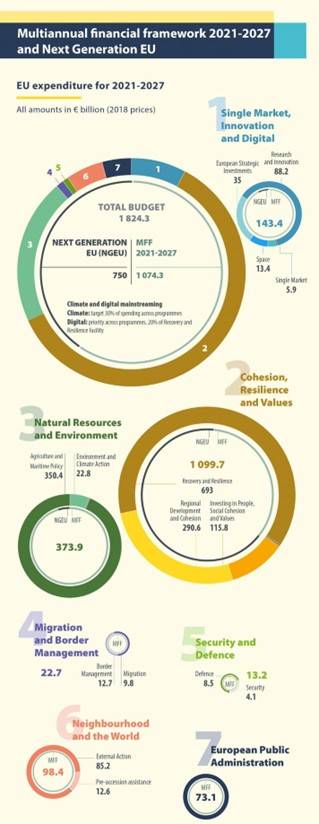What is the structure of the budget of the European Union?
Location
The budget of the European Union (EU) is structured in a way that allows for the financing of the EU's various policies and programs. The EU budget is primarily financed through contributions from member states, which are determined based on each country's Gross National Income (GNI). These contributions are the main source of funding for the EU's annual budget.
The EU budget is divided into two main categories: the commitments budget and the payments budget.
The commitments budget, also known as the "multi-annual financial framework," is a long-term plan that sets out the overall financial framework for the EU for a period of several years, usually 7 years. It sets limits on the amount of money that can be committed to different policy areas over the period of the framework.
The payments budget, on the other hand, is the annual budget that shows the actual spending of the EU in a given year. It shows the funds that are needed to cover the payments for the ongoing projects and policies, as well as to meet any additional financial needs that may arise during the year.
The EU budget is also divided into several different policy areas, such as agriculture, regional development, research and innovation, and foreign and security policy. Each policy area has its own set of budget lines, which specify the specific actions or projects that will be financed by the EU budget.
Finally, the budget process is closely linked with the political decision making process, as the European Commission proposes the budget, the European Parliament and the Council of the European Union (representing member states) adopt the budget.
Overall, the EU budget is structured in a way that allows for the financing of the EU's various policies and programs, while also taking into account the financial contributions of the member states and the overall political priorities of the EU.
